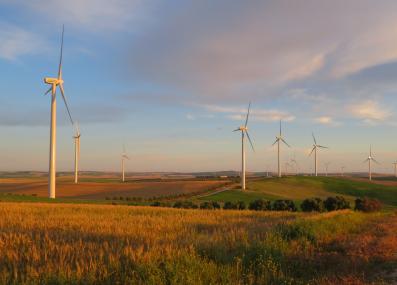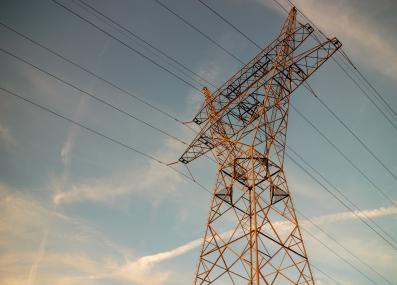Have a question?
Can coastal states meet their clean energy needs without offshore wind?
Yes: offshore wind energy is relatively expensive, and there are plenty of good alternatives. But there are practical reasons some states have focused on offshore wind.
February 12, 2025
On January 20, 2025, President Donald Trump signed an executive order halting new leases for offshore wind power. This effectively means that no new offshore wind energy can be built in the United States, apart from a few projects that already have leases and permits in hand.
In some states, this will scramble plans for building out regional energy systems. Most of the states planning to build offshore wind have goals to decarbonize their electric grids—that is, to get all their electricity from sources that don’t create climate-warming carbon dioxide. These states will now need to pivot to other clean energy sources.
Nonetheless, a pause in offshore wind development is not a major threat to the growth of clean energy in the U.S., says Joshua Hodge, Executive Director of the MIT Center for Energy and Environmental Policy Research.
“There are many paths to reducing carbon,” he says. “Removing any one technology, such as offshore wind, still leaves you with other options. Of course, if you remove too many, it gets dicey.”
Even within our large energy toolbox, some technologies are more important than others. Solar energy and onshore wind (the kind built on land) are the hammers and screwdrivers of clean energy today, useful across the country in projects large and small. If one of these became unavailable, it would be a huge setback, whether you care about decarbonizing our energy system or just about having cheap, abundant electricity.
Offshore wind is more like an electric band saw: a pricey device built for specific situations.
For most of the country, Hodge points out, offshore wind was not promising to begin with. “Almost all of the offshore wind that is developed in the world is using fixed turbines—that is, turbines that are affixed to the ocean floor,” he says. “And that only makes sense in certain parts of the world where you have relatively shallow water, reasonably far out, with really good natural wind resources.”
On the West Coast, the coastal waters are too deep for fixed turbines. California is studying floating turbines, but these are a costly technology and not a centerpiece of the state’s energy planning. Meanwhile, across most of the Southeast and Gulf Coast, ocean winds are not especially strong and reliable.1 “You can almost draw a line from the North Carolina-Virginia border, up to the Canadian Maritimes,” says Hodge. “That is a very good offshore wind resource in terms of the raw wind quality.”
Every offshore wind project actively seeking permits in the U.S. lies in this region, from the proposed Kitty Hawk project in North Carolina to Vineyard Wind in Cape Cod. But even here, offshore wind is far from the cheapest clean energy available.
Building in the ocean is a major engineering challenge. Both wind turbines and the transmission lines that carry their power to shore must be constructed from ships and built to withstand storms and saltwater. Dollar for dollar, an investment in offshore wind provides much less electricity than onshore wind, solar energy or batteries.2
“Everything else being equal, you would absolutely prefer land-based wind over offshore wind,” says Hodge.
In the real world, everything else is not equal, and some states have seen offshore wind as the simplest clean energy resource to build. Consider Massachusetts, which is building two large offshore wind projects and planning even larger ones. Massachusetts is a densely populated state: solar and onshore wind farms here must compete for space with cities and suburbs. The state’s large coastline, meanwhile, is freer for construction.
Of course, new energy could also come from outside the state, and in fact Massachusetts already imports about half its electricity.3 “If Massachusetts could just build onshore wind in places like Northern Maine and Quebec and upstate New York, where there's a lot of room and fantastic onshore wind resources, that would be much, much cheaper for us,” says Hodge. But this, too, takes some space. New energy sources need new transmission lines, which would have to pass through populated areas.
“There are a lot of permitting and particularly siting issues,” says Hodge. “A lot of folks in the Northeast don't want transmission built in or around their communities. I think some of the logic in Massachusetts and in other Northeastern and Mid-Atlantic states is that, because the offshore wind is in the ocean, and most of the transmission infrastructure is under the sea, you're not going to have the siting and permitting challenges.”
Other states have more options for homegrown clean energy. Virginia’s partly-operational offshore wind farm is the largest under construction in the U.S.,4 but the state is also swiftly building solar energy, and it makes a third of its electricity with nuclear power5—another carbon-free option.
New York, too, has been counting on a big buildout of offshore wind. But upstate New York is also an excellent place to build onshore wind, and the state is home to three working nuclear power plants. More importantly, says Hodge, New York is doing the hard work of reinforcing and expanding its transmission system to take fuller advantage of existing low-carbon energy, including a new high-voltage cable for importing more clean hydropower from Quebec.
And that, says Hodge, is the best way for Northeastern states to provide cheap, clean energy to their citizens—whether or not offshore wind is allowed in the mix. “If we really wanted to deeply decarbonize today, we do have that technology,” he says, “if we're willing to build the transmission.”
Submit your own question to Ask MIT Climate
Get the latest from Ask MIT Climate monthly in your inbox
1 U.S. Department of Energy and U.S. Department of the Interior: "National Offshore Wind Strategy: Facilitating the Development of the Offshore Wind Industry in the United States," September 2016.
2 National Renewable Energy Laboratory: 2024 Electricity Annual Technology Baseline Technologies and Data Overview. Accessed February 12, 2025.
3 U.S. Energy Information Administration: Massachusetts State Profile and Energy Estimates. Updated December 19, 2024.
4 National Renewable Energy Laboratory: "Offshore Wind Market Report: 2024 Edition," August 2024.
5 U.S. Energy Information Administration: Virginia State Profile and Energy Estimates. Updated January 18, 2024.









